Designing a Home Shrine (Prayer Corner)
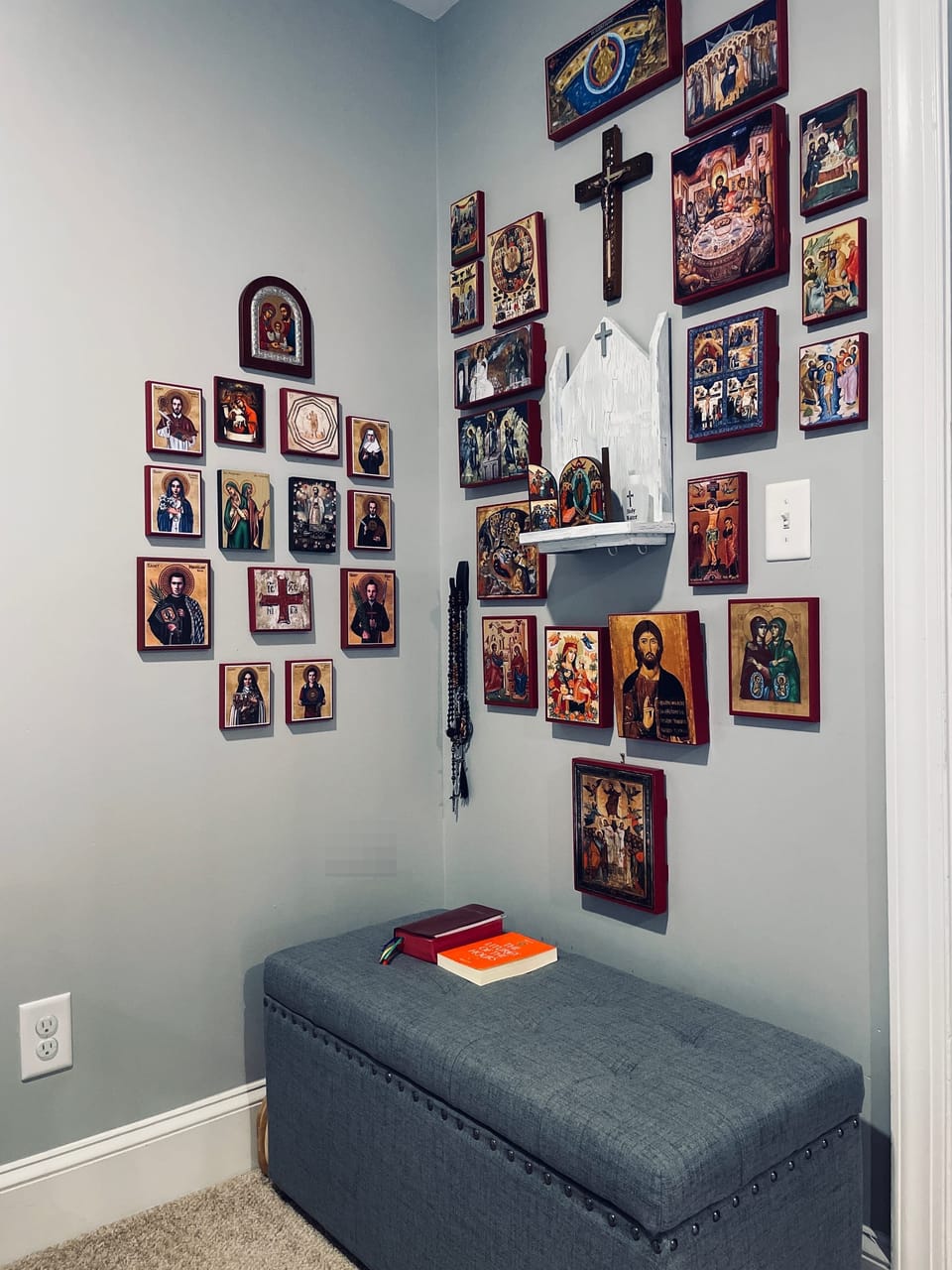
In our busy lives, finding a space for prayer and reflection can be challenging, which is why the concept of a home shrine is so important to me. It’s a dedicated corner in our home that serves as a constant reminder of the presence of God in our daily lives. The practice of using icons in prayer is rooted in the Second Council of Nicea, which reaffirmed the veneration of icons as a holy practice to be revered. These sacred images are not objects of worship but windows into heaven, helping us to focus our hearts and minds on Christ, Mary, and the saints.
This is the corner where our family gathers for prayer. As you can see, it’s more than a display of icons - it’s a place where we encounter the sacred through the beauty of these images and their arrangement. Each icon holds a special significance for us and guides our focus during prayer.
While I am by no means an expert in iconography or designing a prayer corner, I wanted to take a moment to share the details of ours, along with the thought process behind it, in the hope that it might inspire someone else on their journey or spark some ideas.
The Left Wall: Saints and the Holy Family

On the left wall, we’ve placed icons of saints that our family has particular devotions to. At the top, you’ll notice an icon of the Holy Family. Their position at the top of the wall holds deep significance - not only does the Holy Family stand as a model for all Christian families, but Mary and Joseph, as the foremost among the saints, take a place of honor in our shrine.
The Right Wall: Feasts and Moments of Reflection
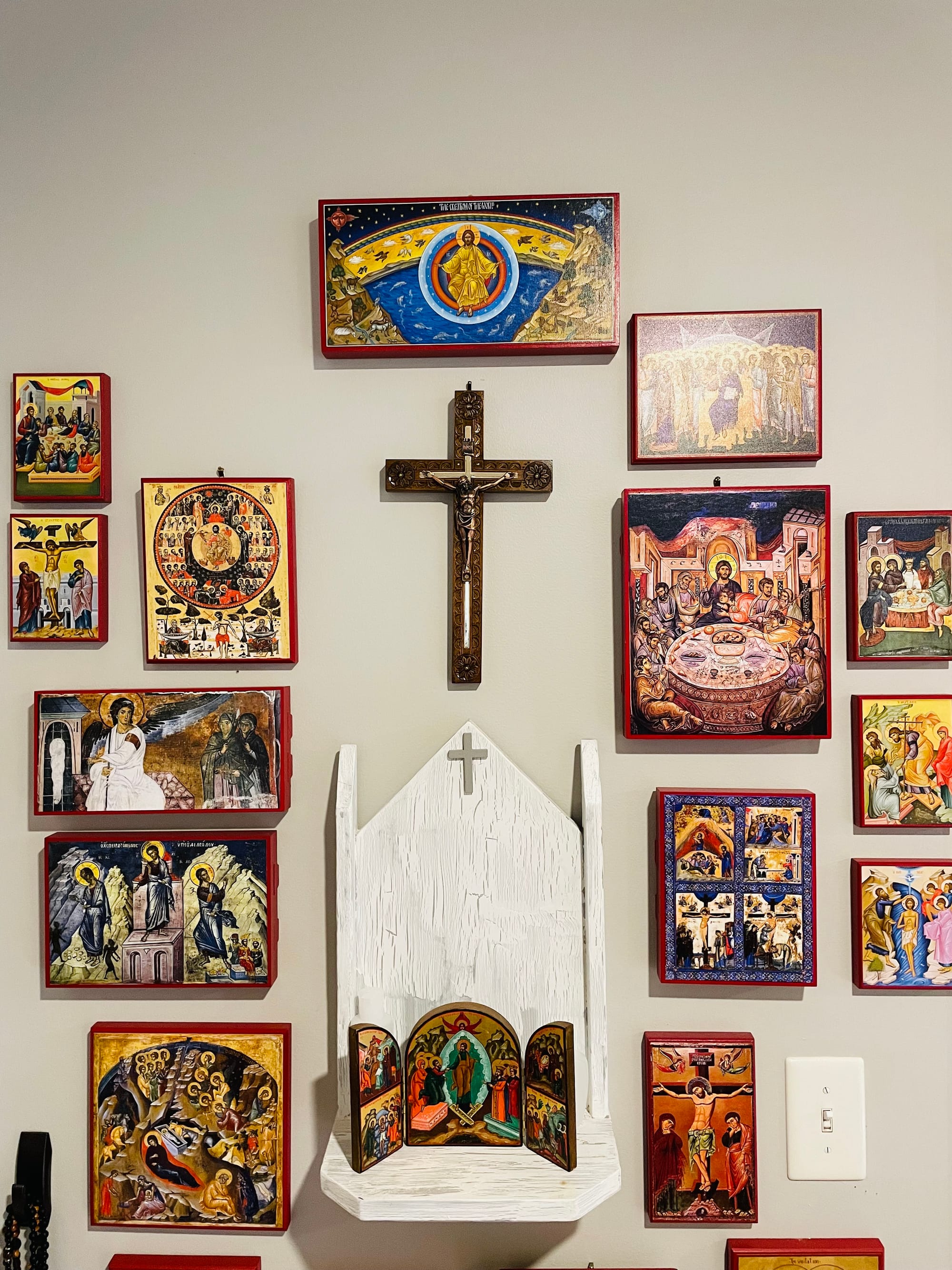
The right wall of our shrine is dedicated to the feasts. This upper section is a place to reflect on the significant moments of Christ’s life and the Church’s liturgical year. Whether we’re standing in reflection or kneeling in prayer, this wall reminds us of the Church’s rhythm - leading us through Advent, Lent, Holy Week, Easter, Ascension, the last judgment and other high points of the liturgical calendar.
Our Lord Jesus and Our Lady
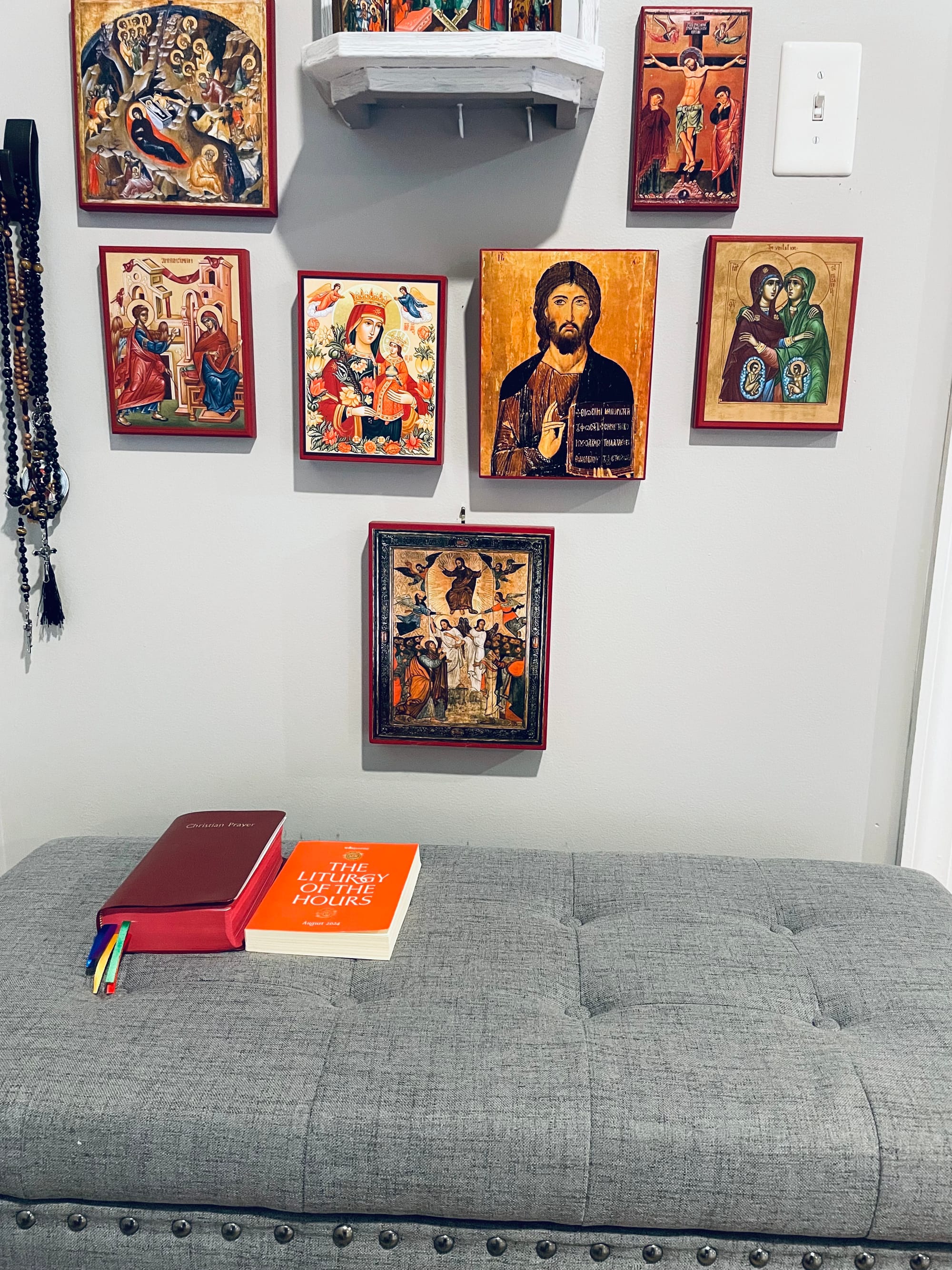
Lower on the right wall, we’ve placed two icons that are central to our prayer life: Christ Pantocrator (Greek for "ruler of all") and Theotokos (Greek for Mary's title of "Mother of God"; this particular icon is Theotokos "the Unfading Flower"). Christ is positioned on the right and Theotokos on the left, a common arrangement in Christian iconography, emphasizing Christ’s central role in salvation and the honor given to Mary as the Mother of God. These icons, and icons in general, remind us of the incarnational realities of salvation - a core understanding in living a liturgical life. Positioned lower on the wall, these icons offer an easy focal point during kneeling prayer, serving as a natural place for reflection in our family’s devotions.
Storage Bench for Sacramentals
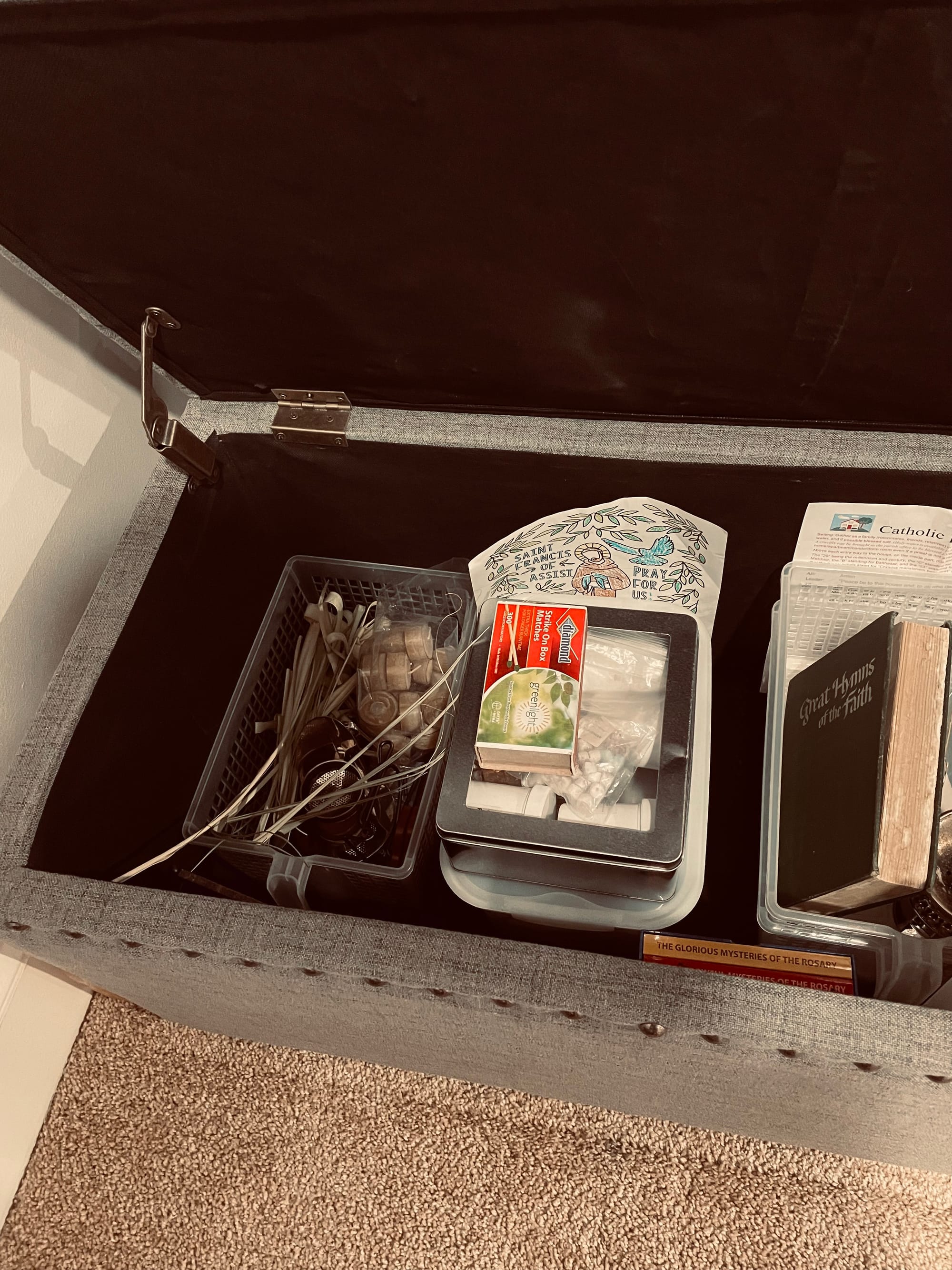
At the foot of the shrine is a simple chest containing the tools we use for prayer: incense, prayer books, sacramentals, and hymnals. It also provides a practical place to lean on when kneeling, offering comfort as we spend time in prayer.
Incense elevates our prayer time, engaging our senses and symbolically representing our prayers rising to heaven. During prayer, we place the incense censer on the shelf in the middle of our shrine.
The Prayer Cushion: Meditating on God's Presence
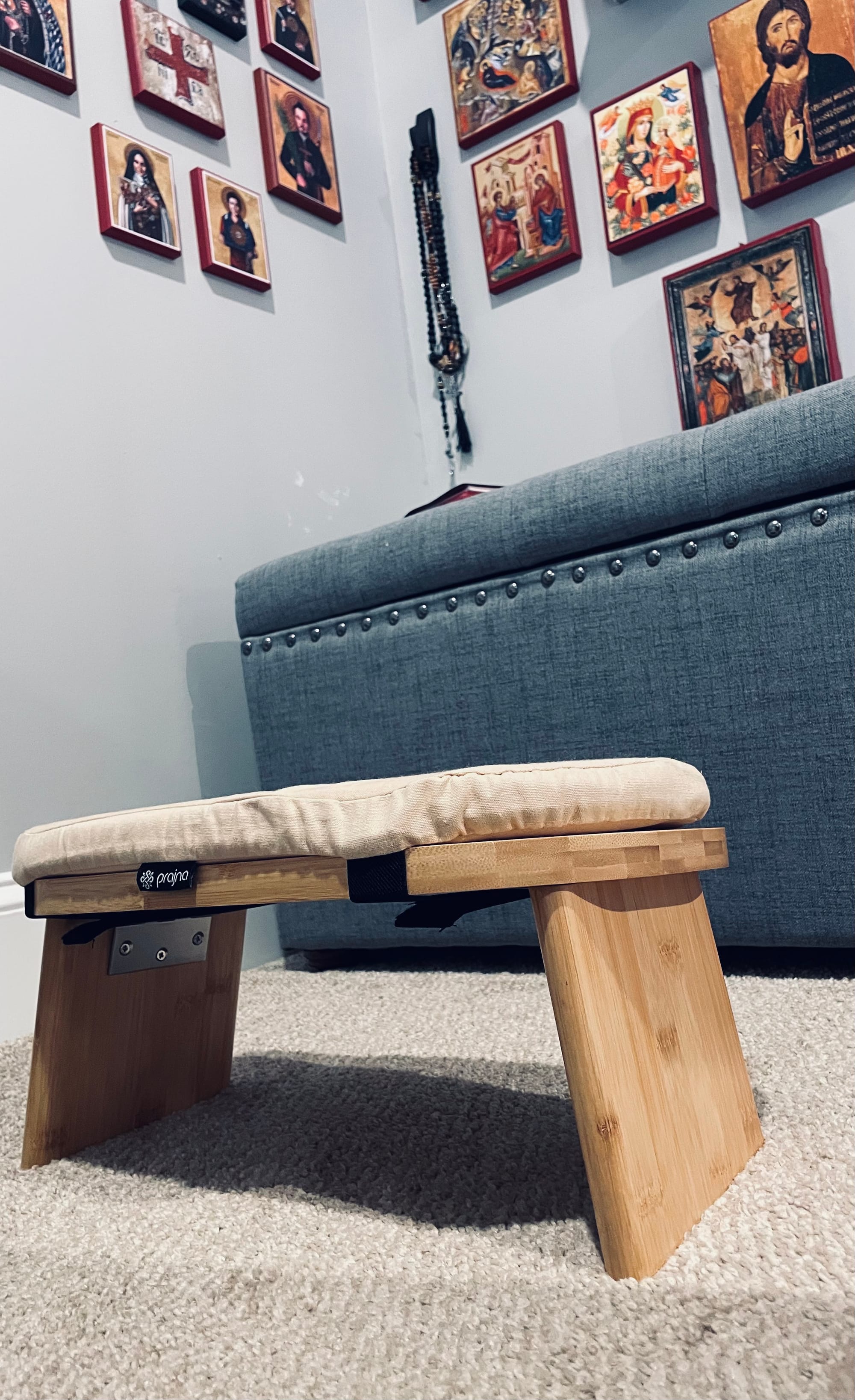
Finally, the prayer cushion, or meditation stool, allows us to kneel in a posture of reverence while providing the support needed to remain in prayer for extended periods. It also allows you to comfortably lean back while kneeling, if you are lifting your gaze to the crucifix or an icon that is positioned higher on the wall. When using this cushion, I typically sit with my hands resting on my legs, palms open and facing upward in a receptive position - though admittedly, prayer postures are an area I'd like to learn more about. This humble posture, combined with the presence of icons, invites deep reflection and connection with God.
As you observe this prayer corner, you may notice that many of the icons are more Orthodox in style. In fact, icons are experiencing a resurgence in Catholic spirituality. If you're interested in iconography, I encourage you to read about the Second Council of Nicaea - an ecumenical council firmly rooted in Catholic tradition. As we rediscover the use of icons and home shrines, we Catholics can also draw on our own more recent rich traditions, such as Ignatian spirituality, to further enrich our prayer life.
Conclusion: A Sanctuary at Home
The home shrine has become a sanctuary for our family - a place to pause, reflect, and unite in prayer. It reminds us that, despite the distractions of the world, every day there is a prominent space in our lives reserved for God. Each icon, each cushion, and each prayer book becomes a small part of our larger journey toward holiness. In this sacred space, within our domestic church, we come together as a family - not just to pray, but to enter into communion with the saints and to find peace in the presence of God.